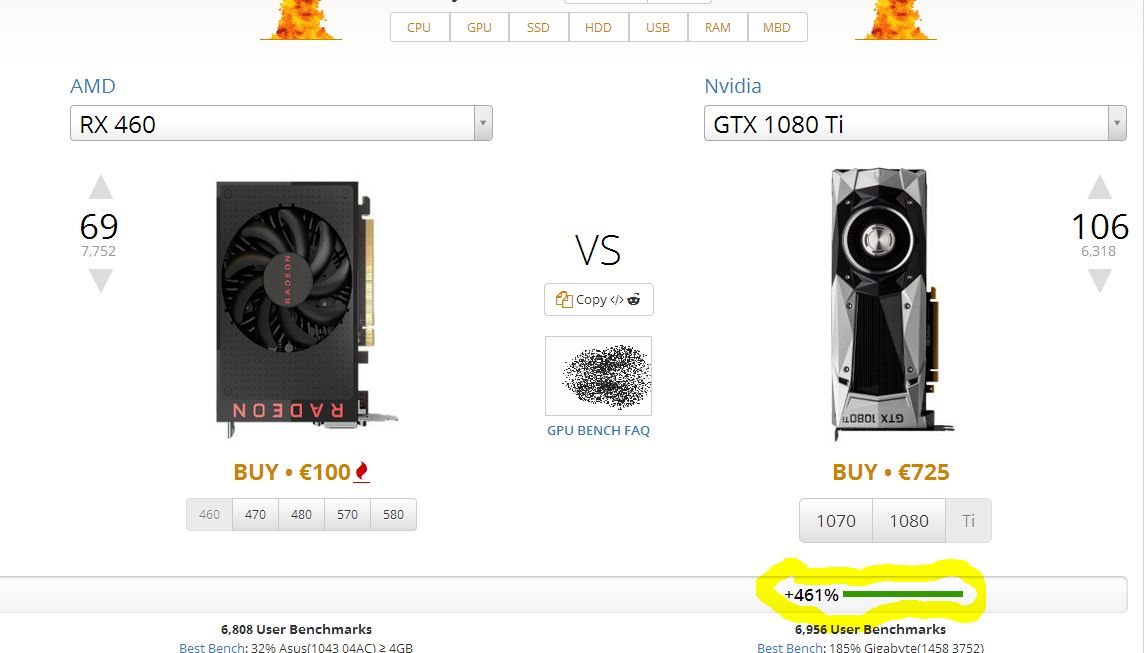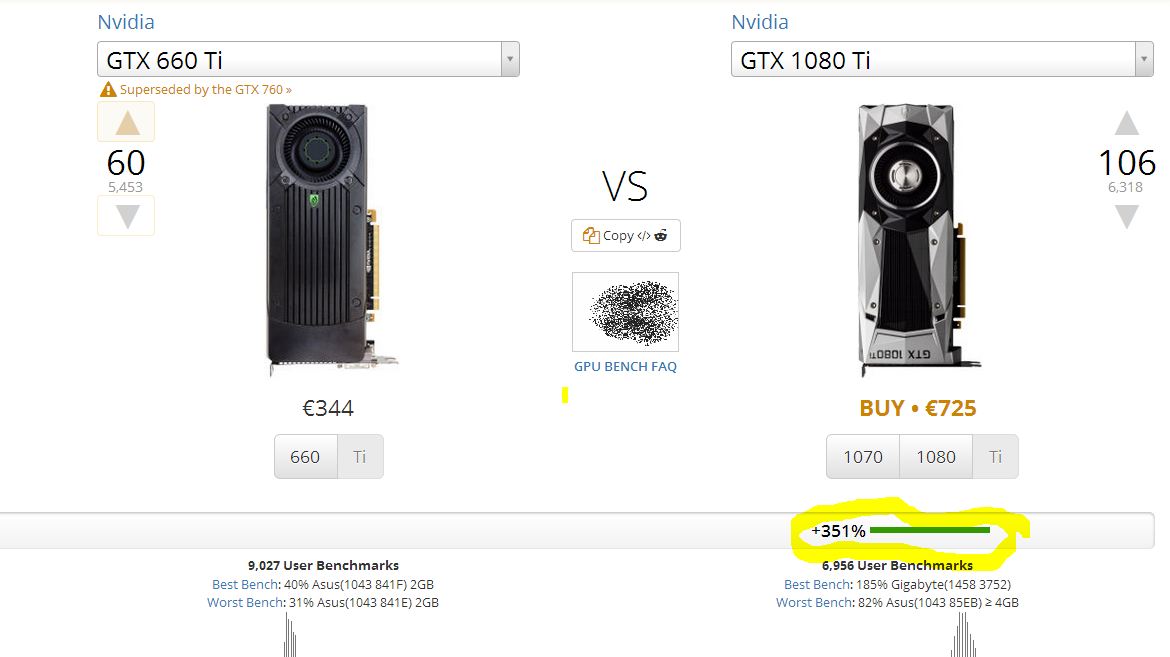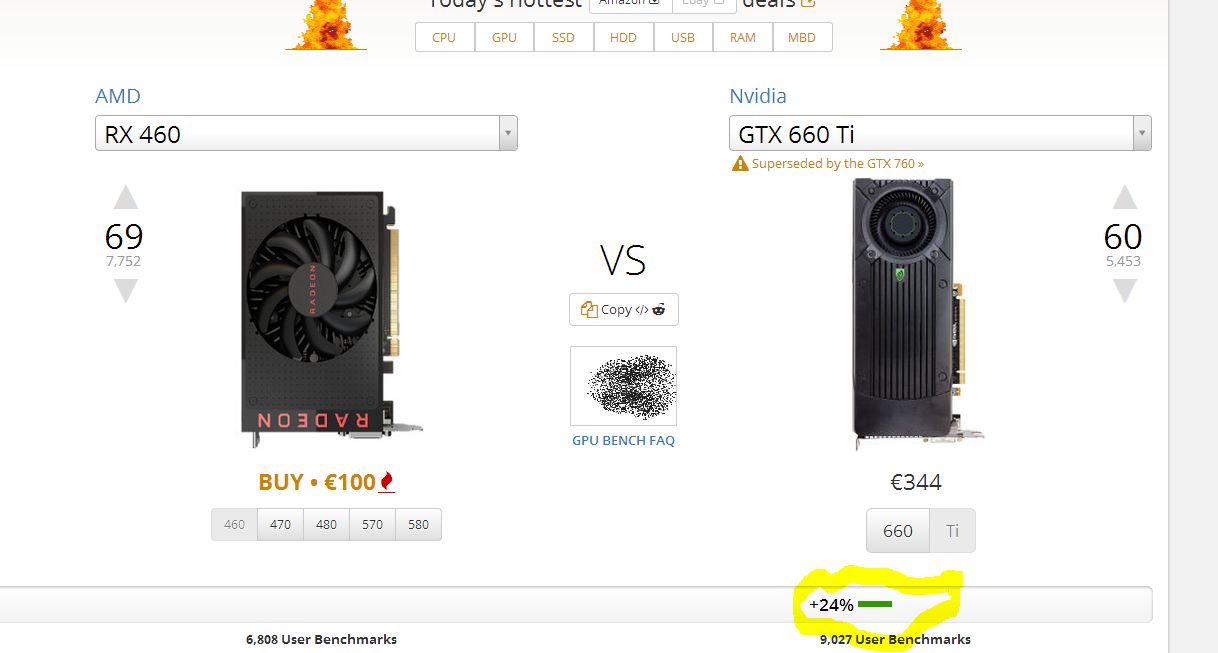I did a test on Userbenchmark.com. The difference should be approximately 100% between the RX 460 and the GTX 660 Ti. Something runs wrong with this website? How does such a result come about? The comparison between the 1080 TI and the 660 TI shows a difference of 351%.
The comparison of the 1080 Ti and the RX 460 shows a difference of 461%.
But the comparison between the 660 TI and the RX 460 shows only a difference of 24%.
How then can the difference of the two upper comparisons show a difference of 110% ?, if the lower comparison says that between the GTX 660 TI and the RX 460 is only a difference of 24%?
Sorry for my bad English, its not my native Language.



The comparison of the 1080 Ti and the RX 460 shows a difference of 461%.
But the comparison between the 660 TI and the RX 460 shows only a difference of 24%.
How then can the difference of the two upper comparisons show a difference of 110% ?, if the lower comparison says that between the GTX 660 TI and the RX 460 is only a difference of 24%?
Sorry for my bad English, its not my native Language.





